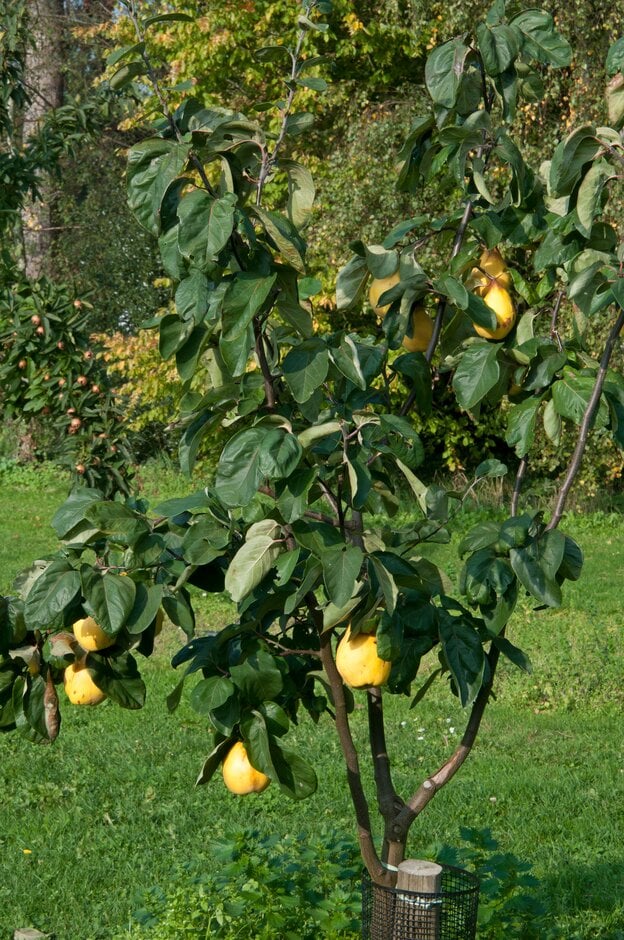Cydonia oblonga 'Vranja' ambig. (F)
quince 'Vranja'
A variety of quince up to 5m in height, which is highly productive. Green leaves with pale undersides appear before fragrant, white to pale rose-pink flowers in spring, followed by pear-shaped, fragrant golden-yellow fruits from October which can be used for jams and jellies or adding sparingly to apple pies and crumbles for extra tartness. As quince fruits are very fragrant, they are best stored away from other fruits to avoid tainting them

Buy this plant
Size
Ultimate height
2.5–4 metresTime to ultimate height
10–20 yearsUltimate spread
2.5–4 metresGrowing conditions
Moisture
Moist but well–drainedpH
Acid, Alkaline, NeutralColour & scent
| Stem | Flower | Foliage | Fruit | |
| Spring | Pink White | Green | ||
|---|---|---|---|---|
| Summer | Green | |||
| Autumn | Green | Gold Yellow | ||
| Winter |
Position
- Full sun
Aspect
South–facing or West–facing
Exposure
Sheltered Hardiness
H5Botanical details
- Family
- Rosaceae
- Native to GB / Ireland
- No
- Foliage
- Deciduous
- Habit
- Spreading branched
- Genus
Cydonia are large deciduous shrubs with simple, ovate leaves and 5-petalled, bowl-shaped pink or white flowers, followed by pear-like fruits, edible when ripe
- Name status
Accepted
- Horticultural Group
- This genus produces fruit, but not necessarily edible fruit
How to grow
Cultivation
Grow in fertile, moist soil in a warm, sheltered spot. See quince cultivation
Propagation
Suggested planting locations and garden types
- Cottage and informal garden
- Edible fruit
Pruning
Pruning group 1 but any growth from beneath the graft point, should be removed as soon as possible
Pests
May be susceptible to caterpillars and aphids
Diseases
May be susceptible to quince leaf blight, brown rot, fireblight, powdery mildews and honey fungus
Get involved
The Royal Horticultural Society is the UK’s leading gardening charity. We aim to enrich everyone’s life through plants, and make the UK a greener and more beautiful place.